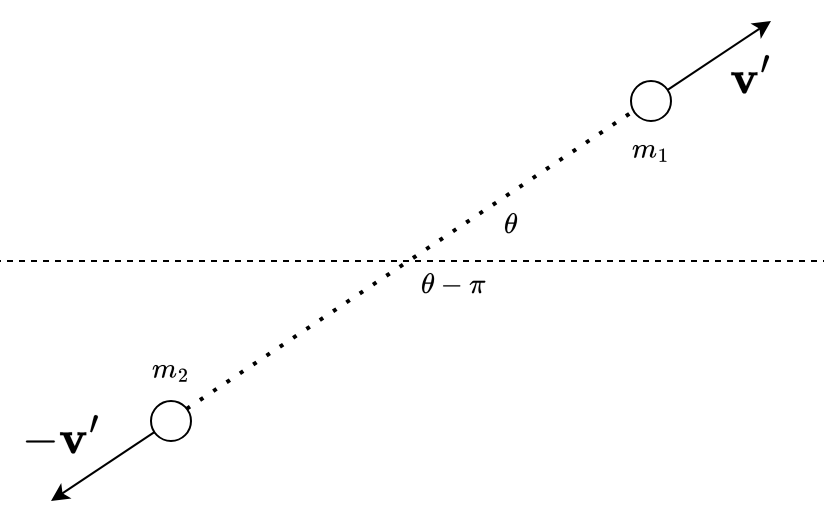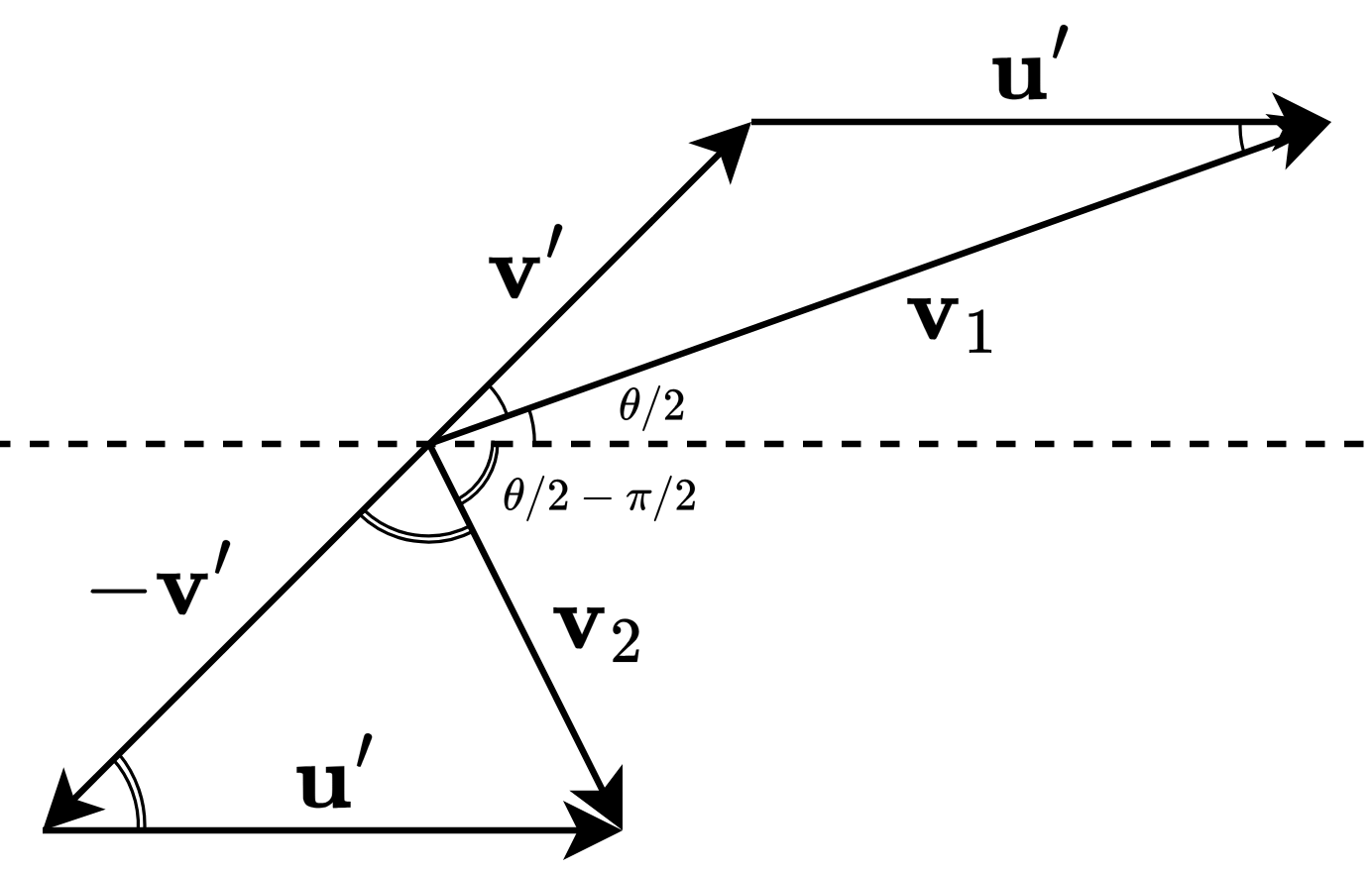5.81
Let the two masses be and , with moving to the right with a velocity and stationary.

The position of the CM is given by , where and are the positions of and with respect to the lab frame. The velocity of the CM is . It follows that and , where and are the velocities of and respectively in the CM frame.
Let the velocities of and after the collision be and in the CM frame. Say makes an angle with the horizontal in the CM frame. Since the initial momentum was zero, it follows from the conservation of momentum that must make an angle with the horizontal and have the same magnitude as . Thus, .

Angles are measured counterclockwise from the horizontal axis.
Also, since KE is conserved in the CM frame, . So, .
Let the final velocities of the masses in the lab frame be and respectively. We know that and .

Elementary geometry tells us that and must be inclined at and to the horizontal axis. Hence, they are perpendicular. The magnitudes of the final velocities can be obtained using the law of cosines.
5.91
Consider the system at an arbitrary time , when the chain is not completely extended. Since the heap is in free fall, it has fallen by a distance . The force applied at the top end can be expressed as the sum of the force required to hold this length of chain at rest (), and the force required to induce the change in momentum experienced by the part of the chain which comes to rest during a time interval ().
The first part of the force, .
To find the second part of the force, we must find the change in momentum of the piece of chain that comes to rest in . The finial momentum is . The initial momentum is . Thus,
So,
Now, the chain will unravel completely when . So, for , , and becomes constant at . Thus, we have